David Besford was the son of David Besford and Mary Besford (neé Turnbull). David was born on 1st February 1897 at Middleton Street, Amble, Northumberland.
The 1901 census records David at 4 years old living with his parents and siblings at Swarland Terrace, East Chevington, Northumberland.

Ten years later, the 1911 census records David aged 14 and living with his parents and family at 116 Pont Street, Hirst, Ashington, Northumberland.
The census shows David was now employed as a driver. This meant that he was hitching full tubs of coal to a pit pony and driving them to the pit shaft where they would be taken to the surface. He would have then returned empty tubs to where the putter would take them back to the coalface where hewers were working.
First World War
At the outbreak of the First World War, David joined the armed forces. He enlisted in the Royal Naval Division. His service record tells us that David joined up on 6th November 1914, three months after Britain declared war on Germany. His service record states his date of birth as 25th January 1896. This was not correct. It seems that David lied about his age to appear to be 18 years of age when he volunteered, and thus be accepted for active service.

His service record gives us further interesting details from when he enlisted. His address was now 72 Milburn Road, Ashington. He was unable to swim, was five feet four inches tall, and had blue eyes, light hair and a light complexion.
David enlisted in London and mustered with other Royal Naval Division (RND) recruits at the Crystal Palace, Sydenham, London.

The RND was formed as the result of a decision by Winston Churchill, the then First Lord of the Admiralty. The RND was made up of men who wanted to join the Navy. The Navy was oversubscribed so the surplus recruits were put into the RND which would be used as infantry on land. The RND became a curious hybrid as, despite its deployment on land, it retained naval ranks. David Besford entered as an ordinary seaman.
There were two brigades, each comprising four battalions named after former Admirals. David was assigned to the 1st brigade, Hawke battalion.
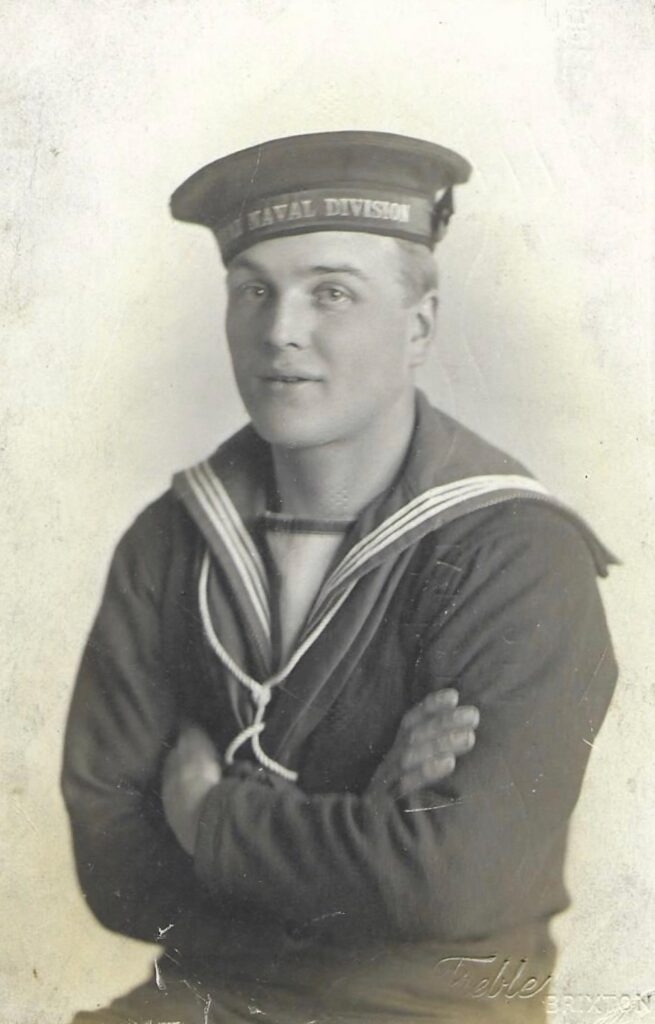
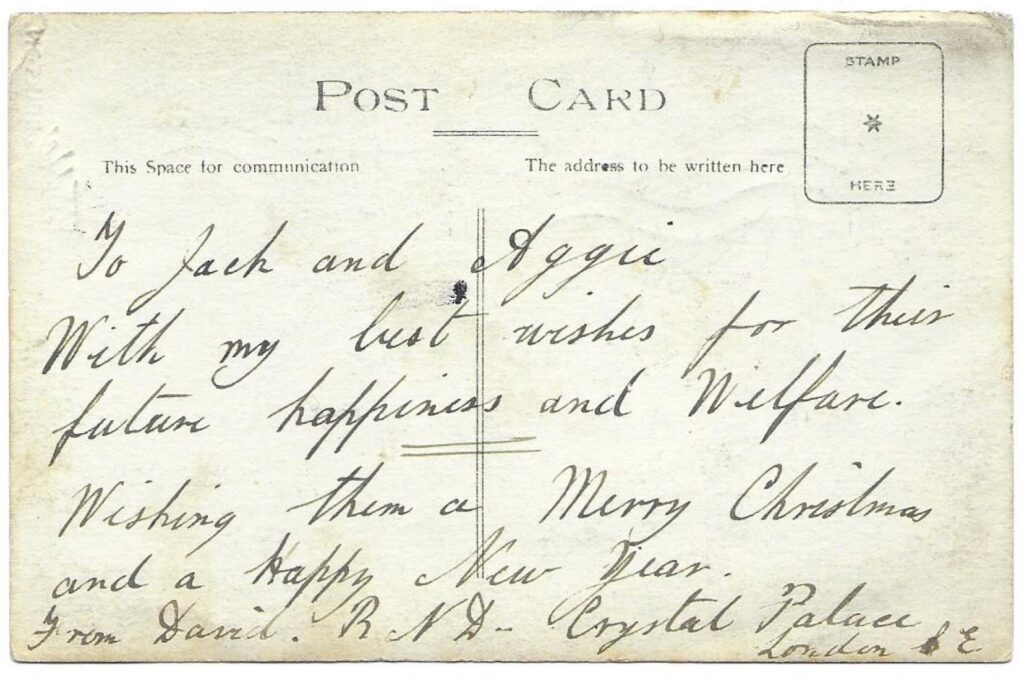

Gallipoli
Following initial training at Blandford Camp in Dorset, David fought at Gallipoli. The Gallipoli campaign involved the landing of Allied forces on the Gallipoli Peninsula in Turkey. The aim was to break through the Turkish defences, take control of the Dardanelles Strait, and expose Constantinople, the capital of the Ottoman Empire, to attack. The belief was that the Ottomans could thus be knocked out of the war. In the event, the campaign proved a costly fiasco with heavy losses. Churchill was demoted and resigned from the government.
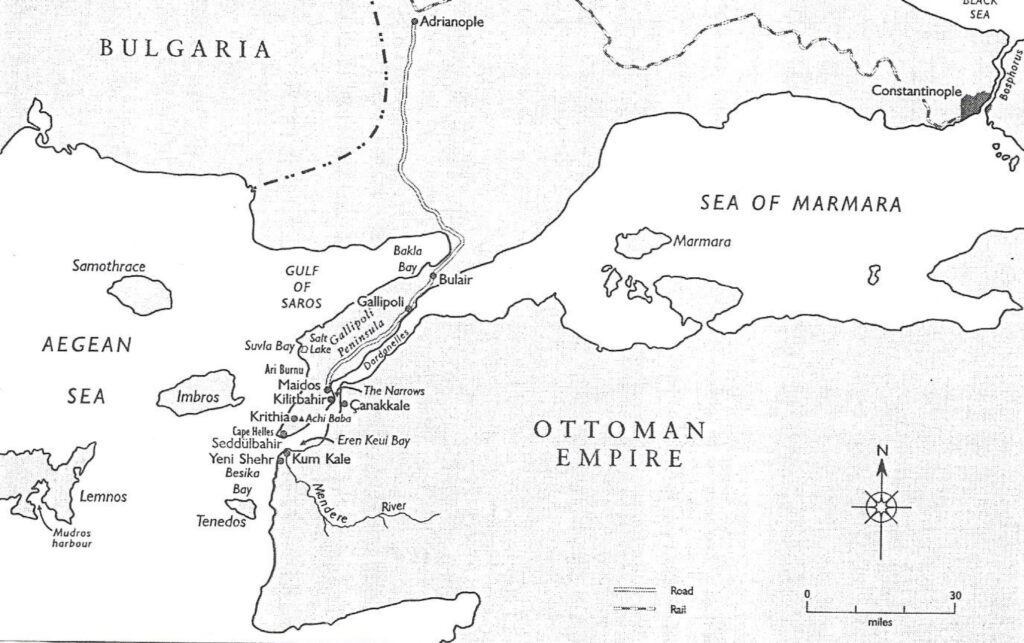
For his part, David Besford was evacuated from Gallipoli suffering from jaundice. He was hospitalised in November 1915 in a Canadian services hospital at West Mudros on the Greek island of Lemnos. He was discharged to an Anzac base in late November. However on 30th December 1915 he was admitted to the hospital ship HMHS Oxfordshire and was disembarked on Malta on 1st January 1916, where he was admitted to the Royal Naval hospital with pneumonia. He then suffered from tonsilitis. Fit again, David was deployed to Alexandria in Egypt at the end of January 1916.
On 18th February 1916, David embarked on the RMS Llandovery Castle and returned to Mudros in Greece. He rejoined his battalion at Imbros (then a Greek island, now part of Turkey) on 29th February 1916. By early April he was back on Mudros as part of an anti-aircraft gun crew.
Western Front
The Hawke Battalion was now destined for the Western Front. David sailed on the Kentucky from Mudros, disembarking at Alexandria on 29th July 1916. Four days later he sailed on the Franconia, disembarking at Marseille on 9th August. He sailed from Le Havre to England on 20th August and returned to Blandford Camp. He was drafted to France with the Hawke Battalion on 2nd January 1917 and sailed from Folkestone to Boulogne the following day.
David had a rough time of it serving on the Western Front. In June 1917 he was admitted to a field hospital and spent six days there before returning to his unit. His service record does not specify the cause of his hospitalisation. Worse was to come, but in the meantime David was promoted to Leading Seaman on 10th August 1917. His service record shows that he had been earlier promoted from Ordinary Seaman to Able Seaman, but does not give a date for this. On 5th November 1917 David was awarded the Good Conduct Badge, a chevron worn on the left sleeve of his uniform.
In January 1918 David was back in England being admitted to the First Northern General Hospital, Newcastle upon Tyne, suffering from scabies on his legs. He went back to the front in France and had to be admitted to hospital in Rouen on 17th March 1918 after his battalion came under attack from German mustard gas shells at Flesquières. His condition on admission was described as “severe”. The Hawke Battalion lost 597 men to mustard gas attacks during the period between 12th and 21st March. David was transferred to hospital in Trouville on 25th March. After a further month he was discharged to a British base at Calais.
David rejoined his battalion on 21st May 1918. Fighting in the Hamel sector of the front was intense, especially for the RND in the area of Aveluy Wood. David received a gunshot wound to his right calf and was admitted to hospital in Rouen on 2nd June. On 9th June he was back in England and was admitted to the University War Hospital in Southampton.
His mother Mary made the trip by train from Ashington to Southampton to visit David in hospital. Mary’s granddaughter Dorothy Jane (Dora) Besford remembered being told about this. Mary’s journey involved changing trains at Newcastle and crossing London from King’s Cross to Waterloo to get the train to Southampton. She had never encountered an escalator before, but some kind gentleman helped her to negotiate this and carried her luggage for her.
David’s active service had come to an end. His degree of disability as a result of his service was assessed as 30% and he was discharged with a payment of £26 10s.

David is wearing the Silver War Badge, which was issued to service personnel who had been honourably discharged due to injuries. One reason for the badge was to discourage incidents where men in civilian dress were challenged about why they had not signed up.
Return to civilian life
David resumed civilian life as a coal miner, and on 13th November 1920 he married Rhoda Barkwell Websell, the daughter of the late Edward Websell, who had been a coal miner. David and Rhoda were married at St. Paul’s Parish Church, Choppington, Northumberland. He was 25 and Rhoda was 23. David’s sister Janet Besford, then aged 17, was one of the witnesses.
The 1921 Census recorded David and Rhoda living at 2 Willow Bridge, Scotland Gate, Choppington, together with their son Edward Besford, now aged 6. David was working as a hewer at Woodhorn Colliery, Ashington. Edward (who was known as Ted) had been born on 28th June 1915 while David was serving with the RND. It seems that Ted was conceived just before David left Choppington to join up.
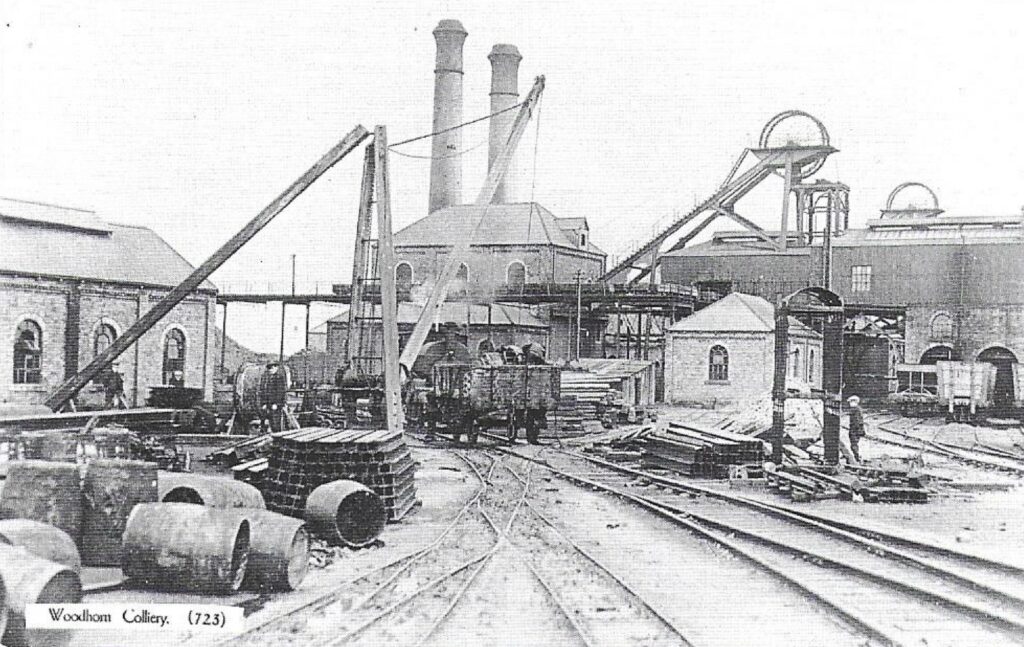
From Northumberland Collieries on Old Picture Postcards published by Reflections of a Bygone Age. © George Nairn
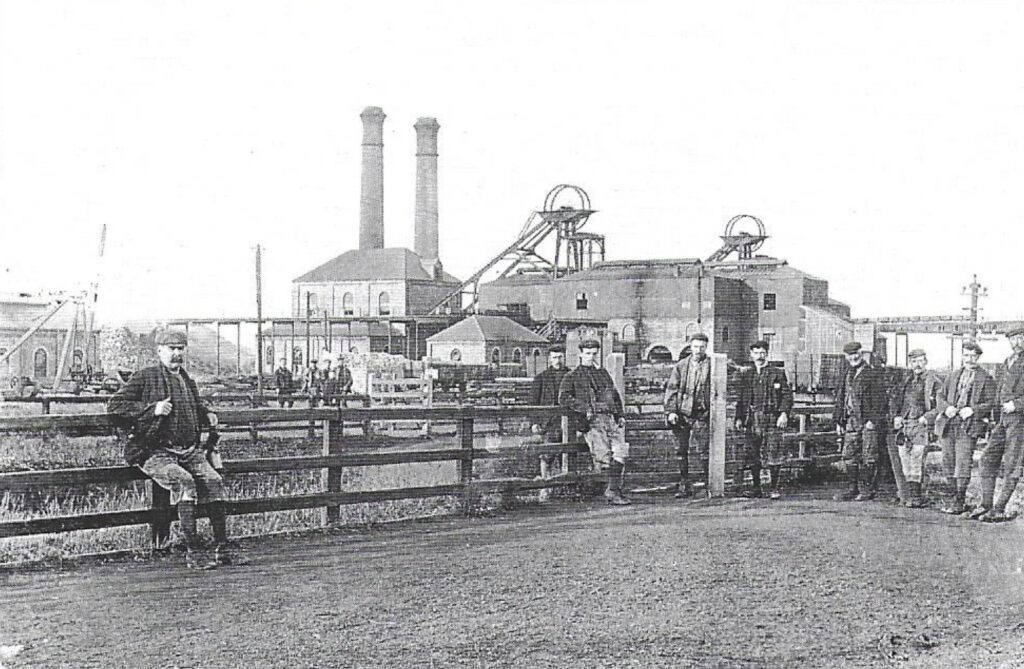
From Northumberland Collieries on Old Picture Postcards published by Reflections of a Bygone Age. © George Nairn
On 7th June 1922, David and Rhoda’s second child, a daughter named Rhoda, was born at 2 Willow Bridge.
David and Rhoda’s third child, Irene Besford, was born at 2 Willow Bridge on 19th October 1923.
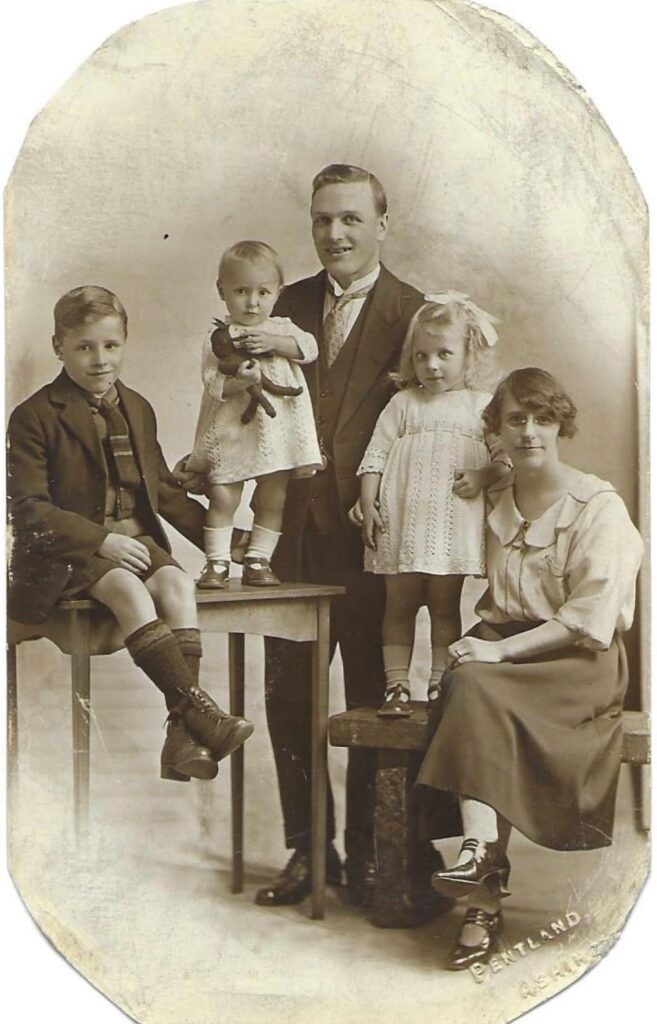
David Besford, while working as a hewer, was also pursuing his education at evening classes in Ashington. The Ashington Collieries Magazine dated October 1925 records David’s results as follows:
| Colliery Practice | Stage 1 | First Class. |
| Mining Science | Second year | First Class. |
| Land and Mine Surveying | Grade 1 | First Class. |
David was heading for a career as a Mines Inspector. He and Rhoda and their children were also heading for a life in the southern hemisphere.
Family move to Australia
In the same month as his excellent exam results were published in the Ashington Collieries Magazine, David set sail for Australia. He left England on 9th October 1925 from the Port of London, with his wife Rhoda and their children, on board the SS Demosthenes.
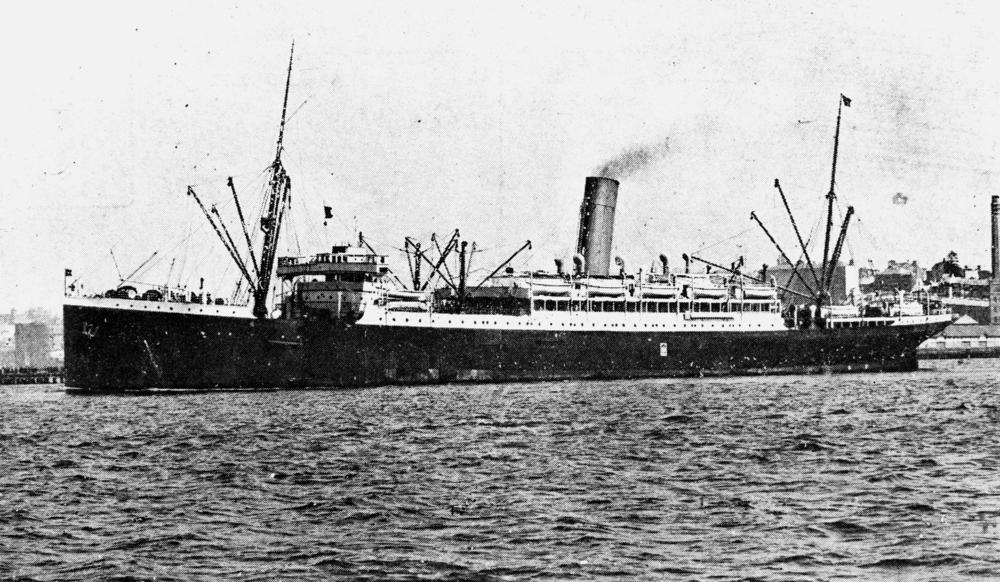
David and Rhoda were aged 28 and 30 respectively. Ted, Rhoda and Irene were 10, 3, and 1. Demosthenes was a 7,000 ton UK steam ocean liner. David, Rhoda and family were among a total of 849 passengers. The crew numbered 220. All of the passenger cabins on board were “outside” cabins with at least one porthole. Her public areas included a verandah café, library, lounge, social hall and smoking room.
David, Rhoda and family disembarked at Melbourne after a voyage which took 48 days. They had left England in the autumn, and arrived in Australia as late spring turned into summer.
David and Rhoda had another child, Sylvia, who was born in Australia.
Work in Australia
David Besford made a career in mining inspection in Australia. Newspaper reports and Almanac entries give us an idea of the level of responsibility involved in David’s employment.
David became the District Mines Inspector for Gippsland, Victoria. In 1937 he was heavily involved in the aftermath of an explosion at the Wonthaggi State Mine which cost the lives of 13 miners. The Wonthaggi mine was where his brother Tom Besford worked as a miner but, thankfully, Tom was not amongst the casualties. The explosion occurred on 15th February 1937, and led to an inquest into the deaths and a subsequent commission of enquiry.
However, in the immediate aftermath the priority was to try to find and evacuate any survivors. There were reports in many Australian newspapers of the efforts which were made. David Besford led the party of rescuers into the mine. An article in the Mercury of Hobart, Tasmania, dated 20th February 1937, reads as follows:
Wonthaggi Disaster, Melbourne, 19th February 1937. Mr. D. Besford, Mines Inspector, who was nearly overcome by gas fumes while engaged in rescue work late yesterday, has been granted leave of absence until March 1st. He noticed that a canary he was carrying in a cage had died, and at that moment the nose clip on his respirator slipped. His shout of “I’m done for!” attracted the attention of two rescuers, who carried him into clearer air, where he recovered.
The gas which nearly did for David was carbon monoxide, known to miners as “afterdamp”. This is a product of the ignition of a mixture of methane and oxygen or “firedamp”, which was the cause of the Wonthaggi explosion.

A report in the Melbourne Argus of 18th March 1937 records that David was questioned for almost six hours at the inquest into the deaths. The report noted that David had led the relief parties who entered the mine and that he still bore the signs of his ordeal when attending the inquest. David indicated that in his opinion the explosion had been caused by a naked light igniting firedamp in a distant reach of the mine. He said that the ignition of methane would have raised a lot of coal dust and would have carried the explosion right through to the pit shaft.
Although David said that the mine management had always carried out his recommendations satisfactorily, the Wonthaggi miners struck over concerns about conditions in the mine and their representatives asked the Victoria State Cabinet to put David Besford in sole charge of safety procedures at the mine as a condition of their return to work. This was refused, and the miners had to resume work under the previous arrangements.
Tasmania
David and Rhoda left Victoria for Tasmania in October 1943.
Walch’s Tasmanian Almanacs for 1947 and 1948 show David as a Magazine Keeper and Inspector of Explosives. They were living at 20 York Street, Sandy Bay, a suburb of Hobart, the capital of Tasmania.
Visit to England
David and Rhoda returned to England to visit their relatives in 1959.
They sailed on the SS Orontes from Melbourne, and whilst in England lodged with David’s brother George Besford and his wife Maud at 251 Rosalind Street, Ashington.
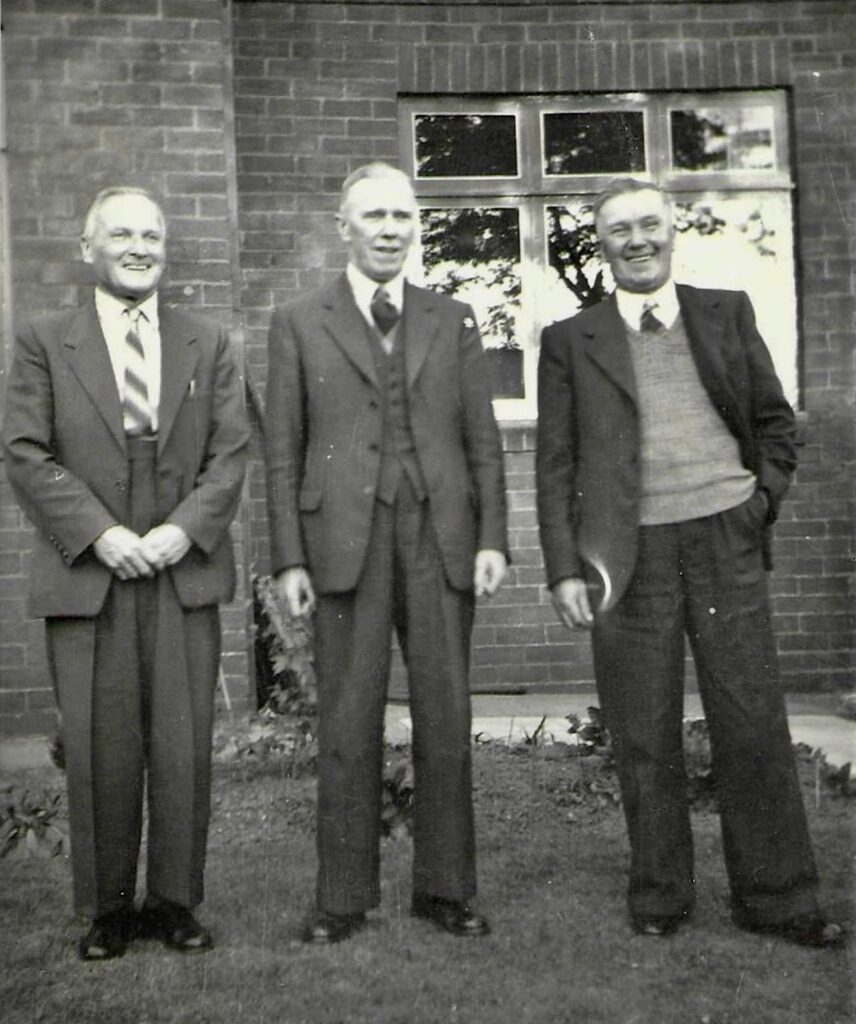
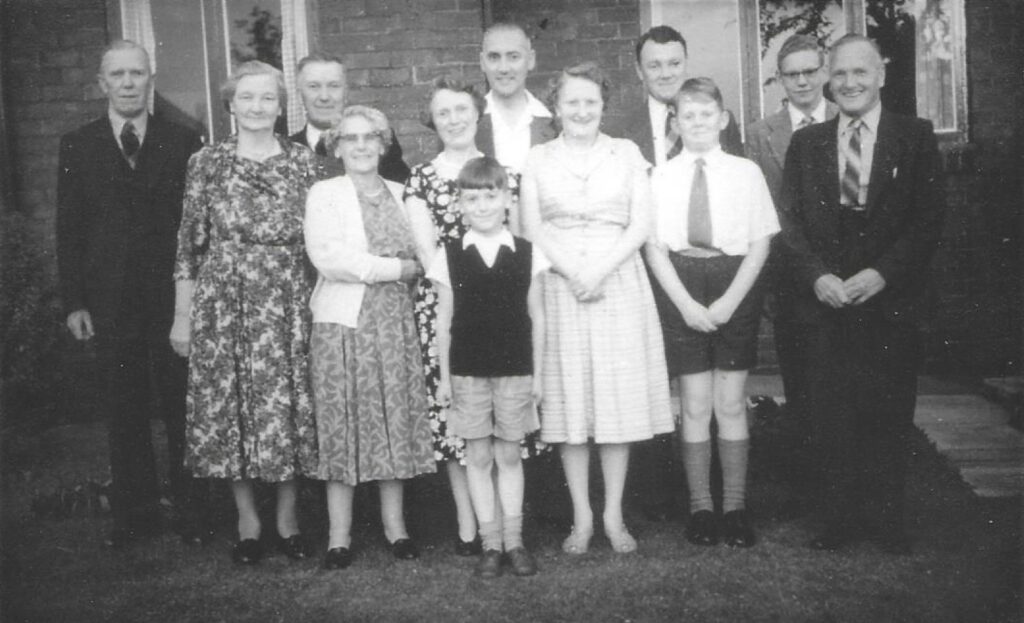
Besford, Dora Hornsby (née Besford), John Hornsby aged 8, Harry Hornsby, Joan Besford (née Matthews), David Besford, Alan Besford, John Besford, David Besford.
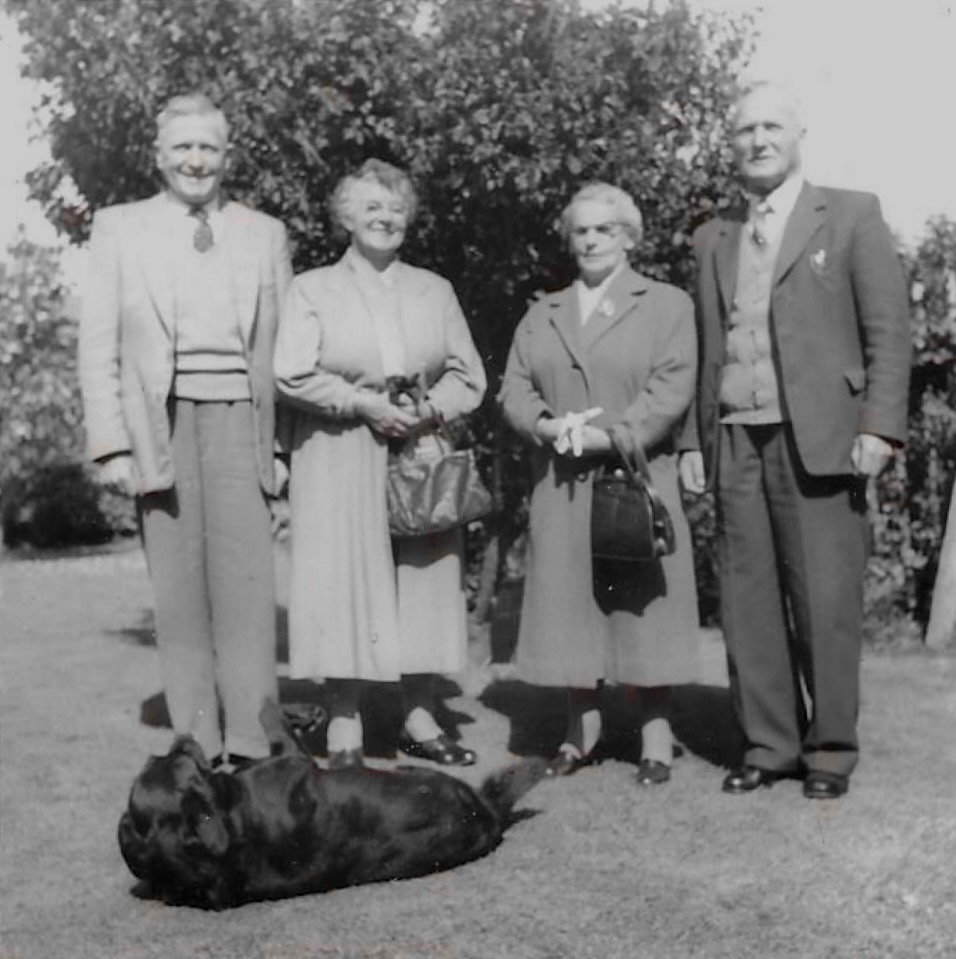
Left to right are Tommy Besford, Alice Besford, Rhoda Besford and David Besford.
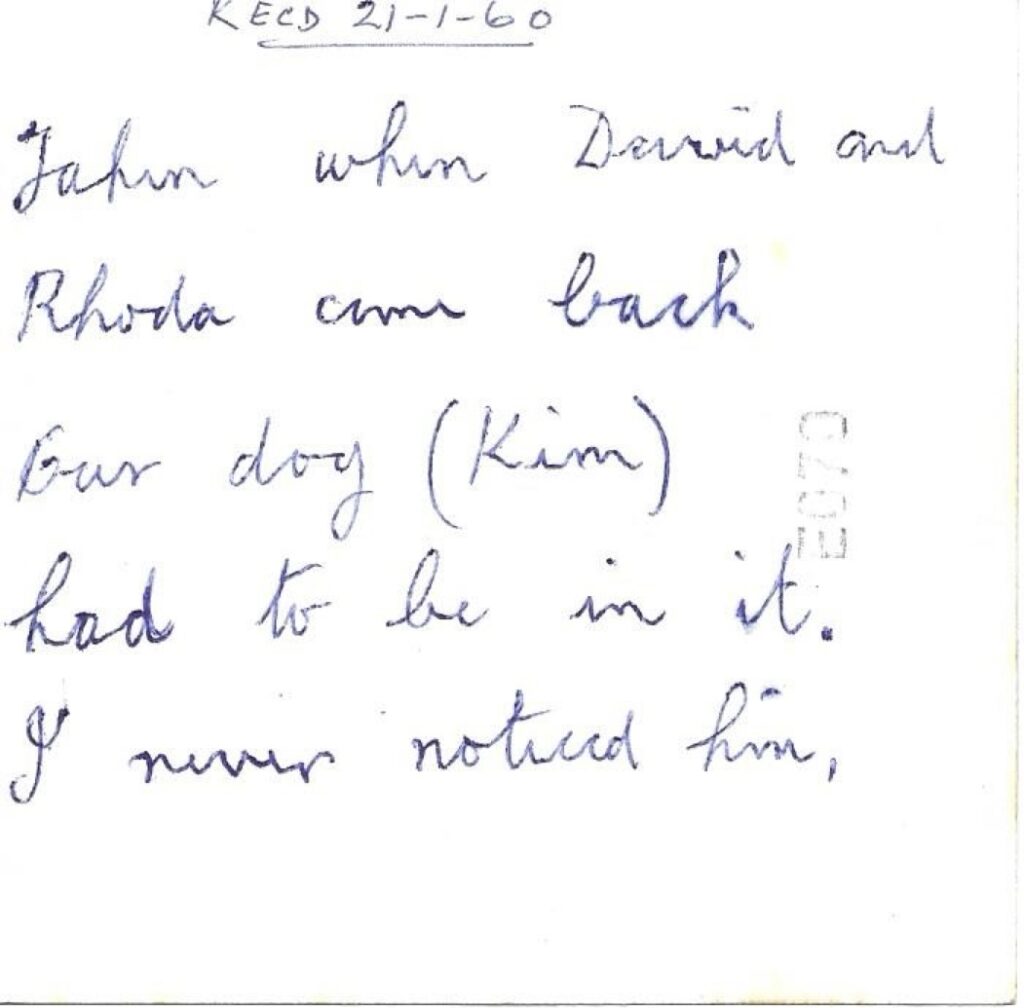

David died on 23rd September 1991. His burial or cremation was at Cornelian Bay Cemetery and Crematorium, Hobart, Tasmania.
Main image: David Besford in Infantry RND uniform
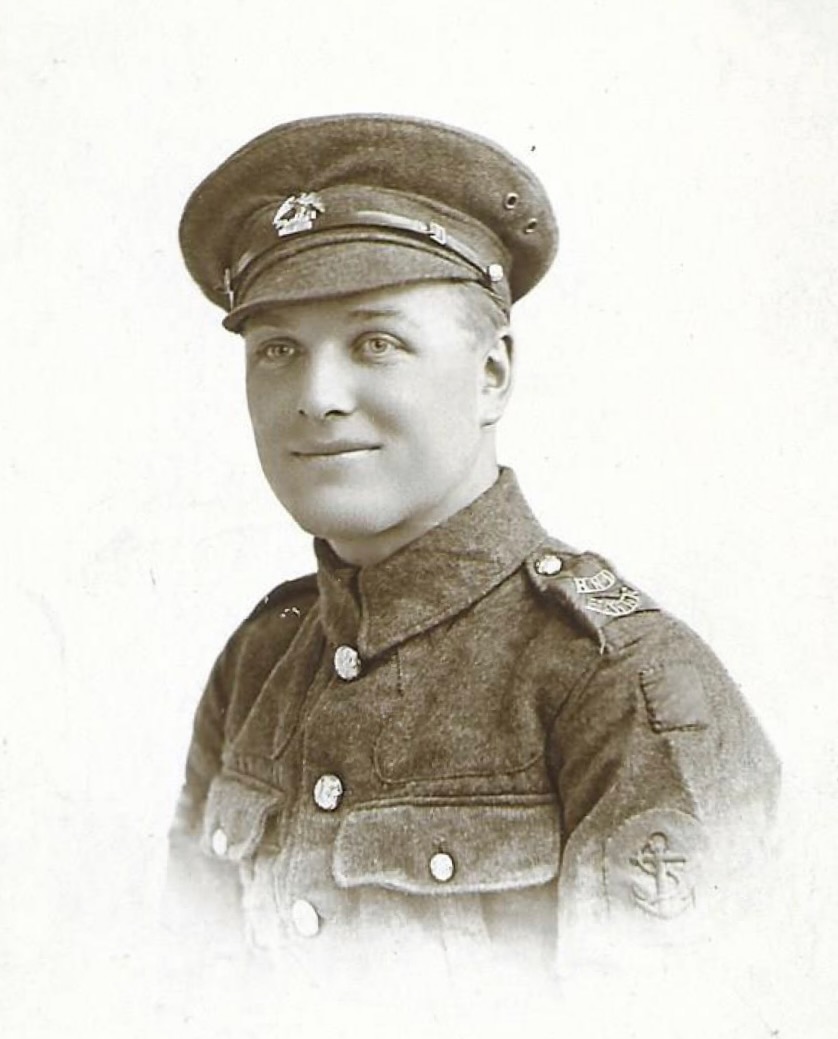
3 responses to “David Besford (1897-1991)”
Hi. I stumbled on this insightful information on my Grandfather. I am the son of Sylvia. I was very close to Pop as we called him.
Hi I am the grandson of David Bedford (my pop)
My mum was Rhoda Turner (daughter of David Bedford)
she married Fred Turner and we have resided in Tasmania…great memories of my pop and gran.
I am Anne Turner, granddaughter of David and Rhoda Besford. I was delighted to come across this website. It is a great history of my Pop, and invoked some wonderful memories, so thankyou to whoever put it together.